Laser Harp
A musical instrument thats puts a spin on a harp by replacing its strings with lasers. It plays a corresponding note when the user touches one of the laser beams.
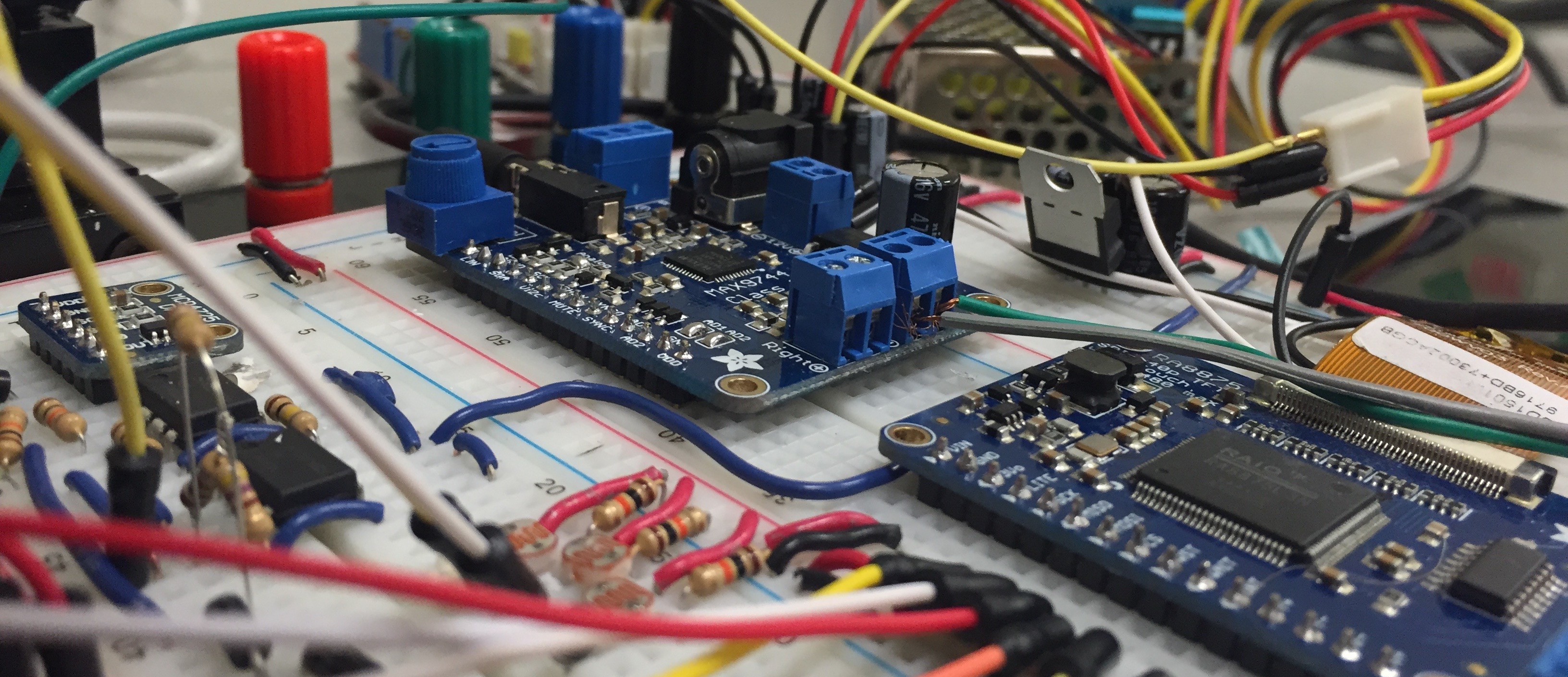
Description
This was my first major electrical engineering project and I had so much fun learning about all the various components and building it. The laser harp is frameless, meaning the harp does not have receivers at the other end of the laser beam but instead detects the laser's reflection if you touch the beam. This allowed for a more compact design and required no setup.
How it works
 It works by shining a laser onto a galvanometer, a mirror that can rotate back and forth very fast, then it measures if a reflection is detected with a photoresistor. If a reflection is detected, a note is played. We were able to achieve multiple beams by changing the laser's position very fast so that to the human eye, there appears to be multiple beams. Logically it works as follows: The mirror moves to position 1, then waits for a small amount of time. The detector measures the light and determines if a reflection is detected. If a reflection is detected, note 1 is played or else nothing happens. Then the mirror moves to position 2 and repeats the same process. This process repeats itself fast enough that a human eye cannot detect it and instead looks like multiple beams. The video on the left shows the laser harp in action for the first time! For this test, we had four different "strings". The lasers are not visible in the clear air, so smoke is required to see them. In the video, it is difficult to see the lasers because we tried to collect smoke by burning a piece of paper. It was not an effective method. We later got a fog machine.
It works by shining a laser onto a galvanometer, a mirror that can rotate back and forth very fast, then it measures if a reflection is detected with a photoresistor. If a reflection is detected, a note is played. We were able to achieve multiple beams by changing the laser's position very fast so that to the human eye, there appears to be multiple beams. Logically it works as follows: The mirror moves to position 1, then waits for a small amount of time. The detector measures the light and determines if a reflection is detected. If a reflection is detected, note 1 is played or else nothing happens. Then the mirror moves to position 2 and repeats the same process. This process repeats itself fast enough that a human eye cannot detect it and instead looks like multiple beams. The video on the left shows the laser harp in action for the first time! For this test, we had four different "strings". The lasers are not visible in the clear air, so smoke is required to see them. In the video, it is difficult to see the lasers because we tried to collect smoke by burning a piece of paper. It was not an effective method. We later got a fog machine.
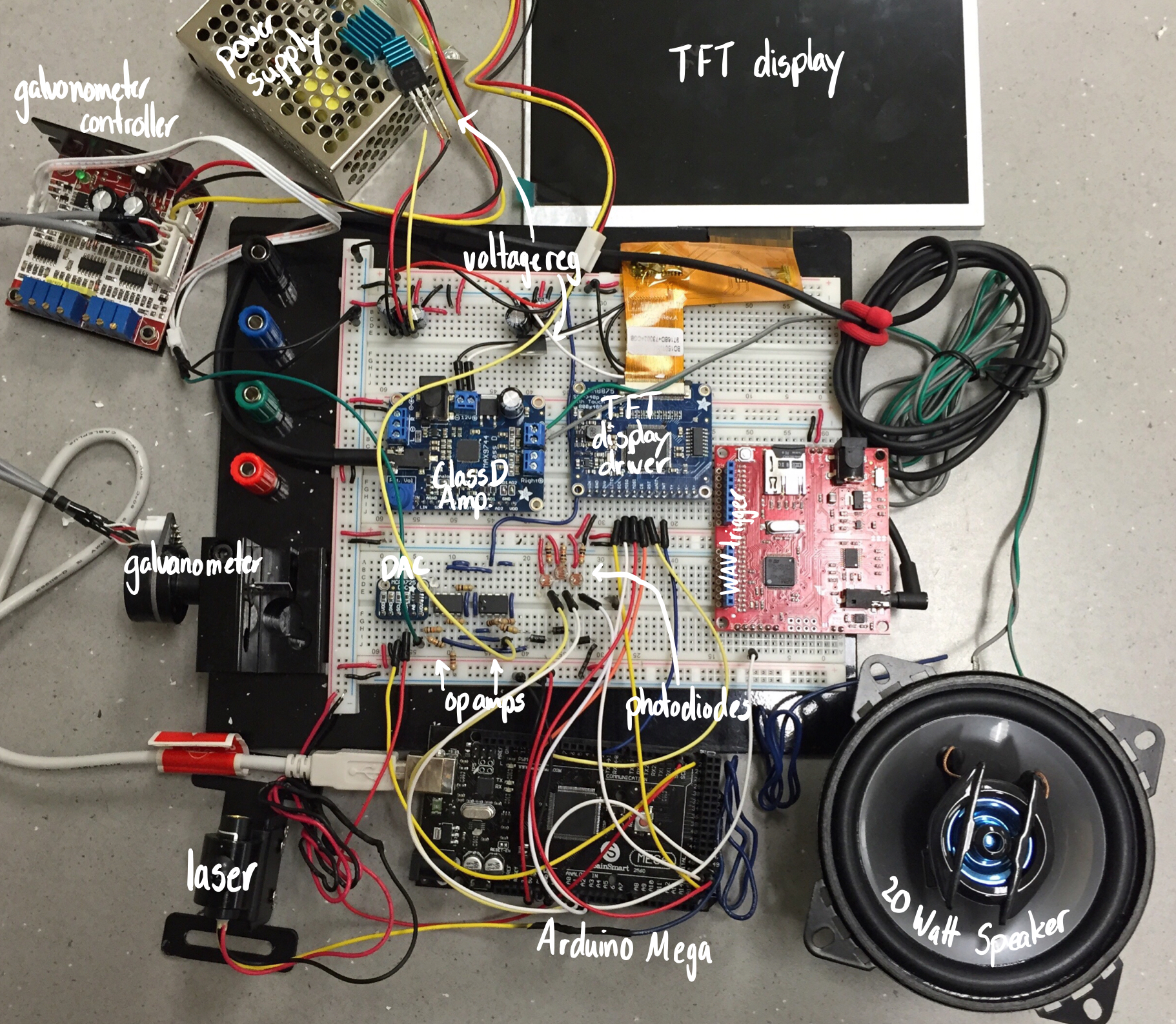 Here are all the components we used for the design. This project had a lot of different components. Almost all our components came from Adafruit. This made it great for my first project. For those who are not familiar with Adafruit, their documentation and tutorials are amazing. I would highly recommend using them for your first few projects. The WAV trigger is from Sparkfun, they are very comparable to Adafruit and they too provide amazing documentation and resources.
Here are all the components we used for the design. This project had a lot of different components. Almost all our components came from Adafruit. This made it great for my first project. For those who are not familiar with Adafruit, their documentation and tutorials are amazing. I would highly recommend using them for your first few projects. The WAV trigger is from Sparkfun, they are very comparable to Adafruit and they too provide amazing documentation and resources.
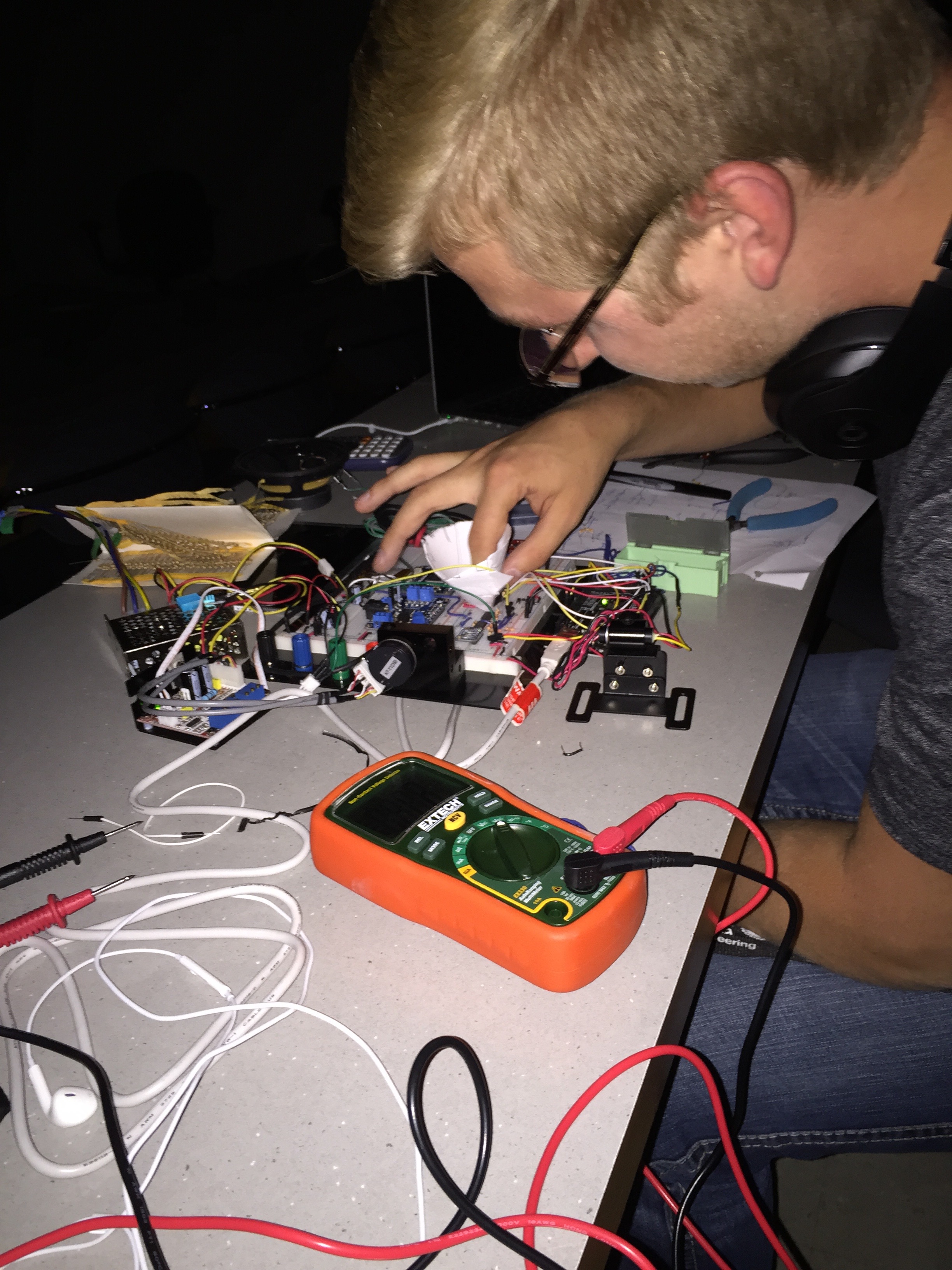
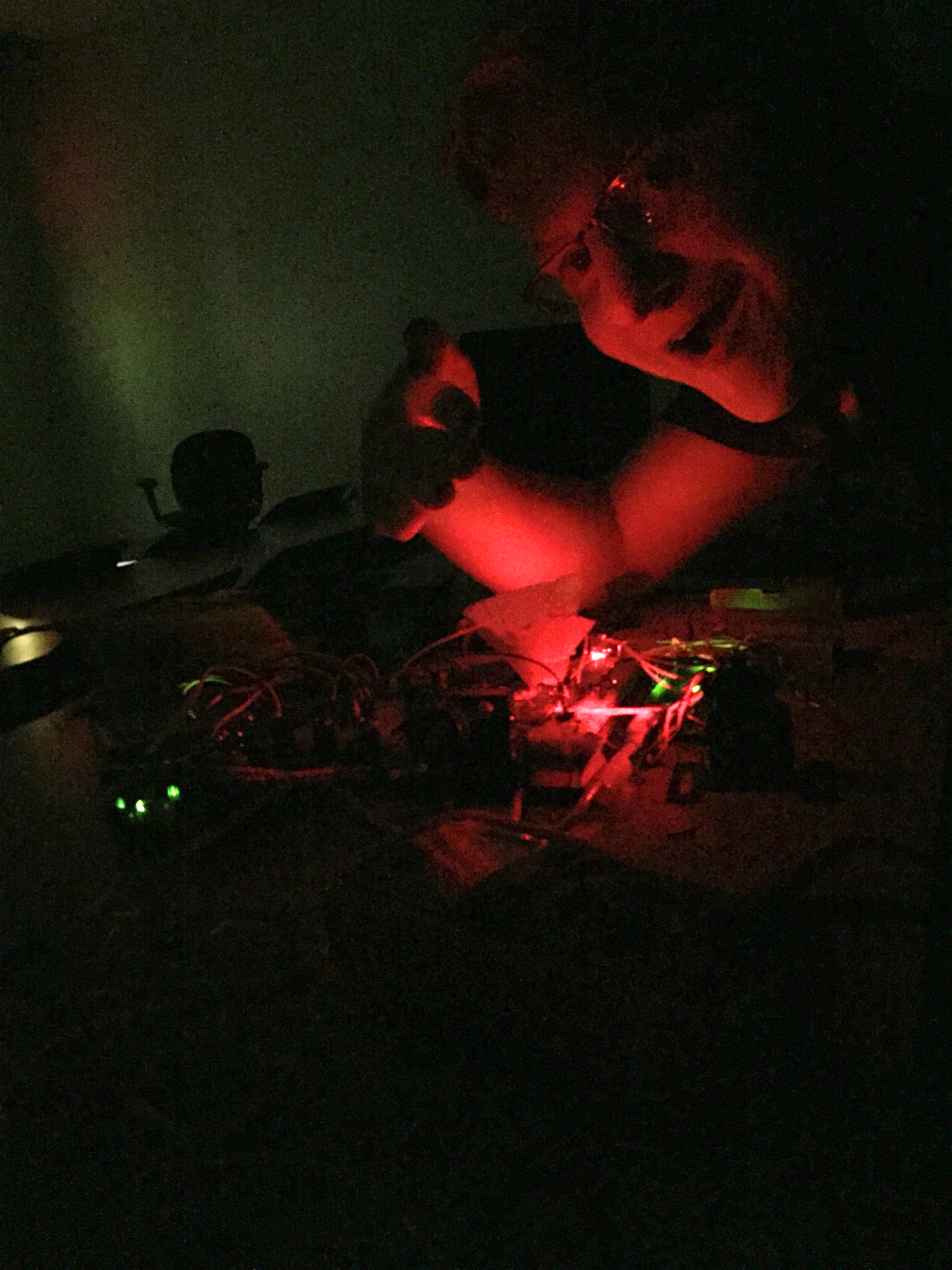

Final Touches
About to Test For The First Time
Early Days of the Laser Harp

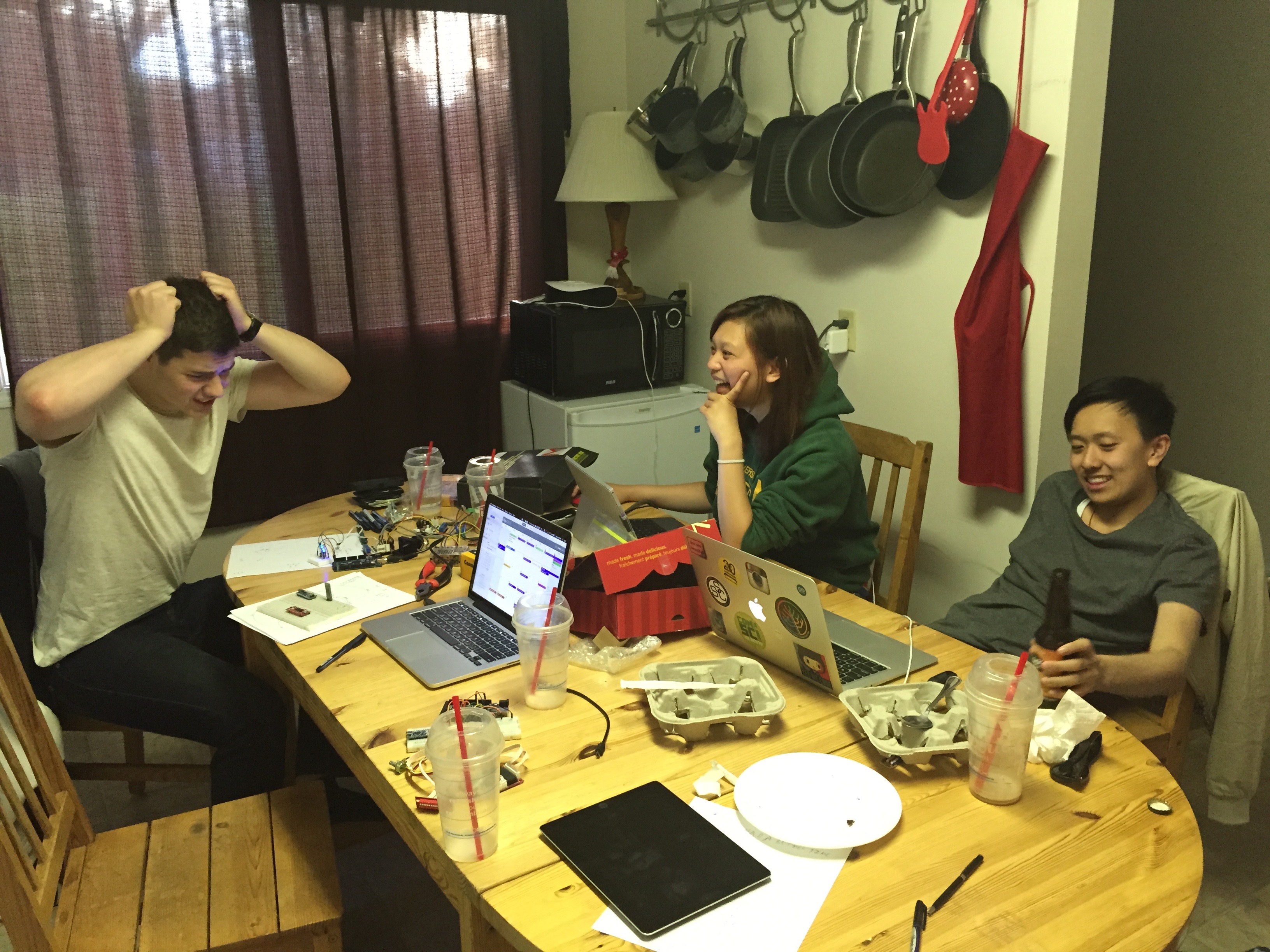

The Dream Team
The Dream Team, Coding Problems...
The Dream Team in Action